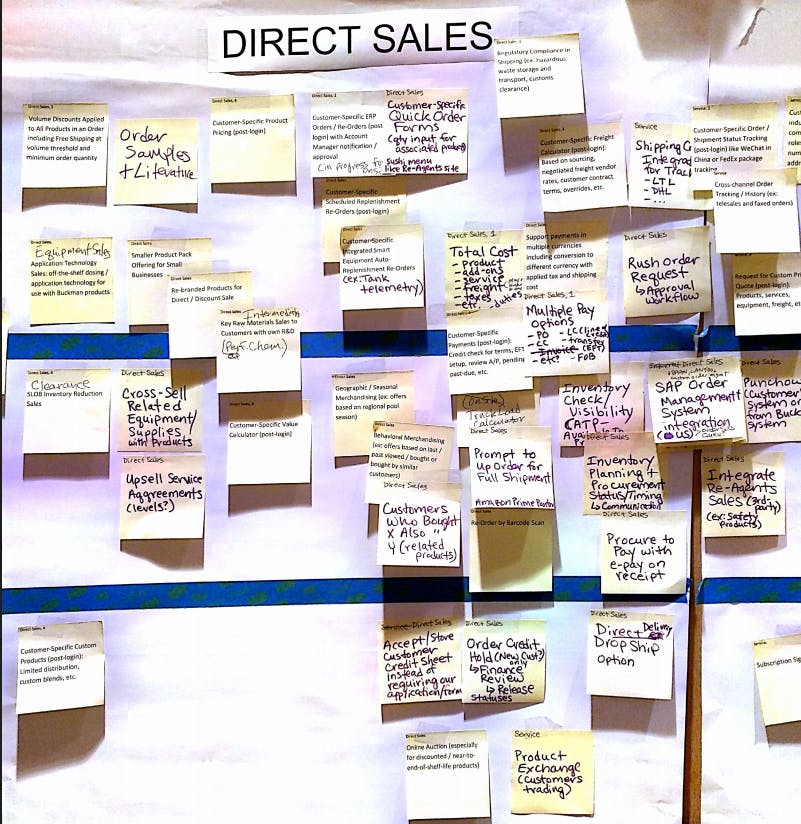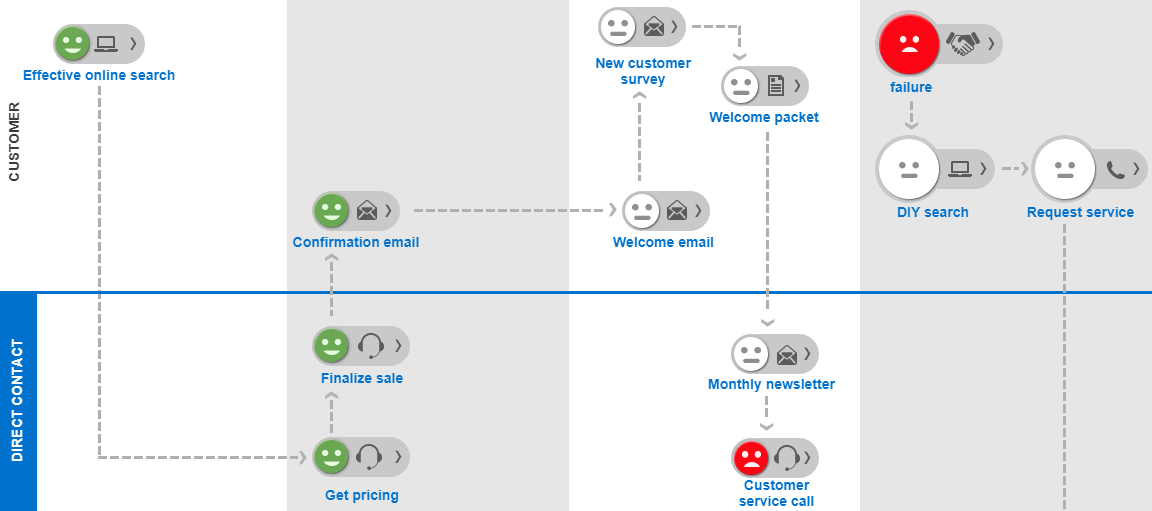You’ve heard all the customer experience stats. 86% of buyers will pay more for a better customer experience (CX). CX is the number-one priority for businesses, over price and product. The majority of customers say poor CX hurts their opinion of brands.
There’s no doubt that CX matters, but it takes truly understanding your customers to make it happen. A structured approach can make all the difference. Let’s take a look at how to use personas, customer journey maps, and content audits to level up your CX.
Personas
Who are your customers? What do they need and want? How can you summarize vast amounts of research on customer segments? Personas can help you answer these questions and many more.
A persona is a “summary” person who represents a particular segment of your customer base. Creating personas helps your team understand customer needs, experiences, behaviors, and goals. A persona with a specific name, age, even a photo, helps you empathize with your customers and keep their needs and wants on the forefront throughout a project lifecycle.
Personas serve as a memorable summary of complex customer research. Imagine asking, “Will this idea appeal to customers who have less than $50 in purchases and are mostly between 30 and 40 years of age with a low to medium engagement level?” Instead, imagine pointing to a well-researched persona and asking, “Will this idea appeal to a New Customer, Ned?”
Personas also help your team in framing journey maps to build an even better understanding of users’ actions and needs. In a journey map workshop, your team walks with each persona through every step and touchpoint in a particular interaction with your site or app.
Before you create personas, it’s critical to do your research: conduct surveys, review current analytics, visit customers in the field, whatever it takes to understand your customers. After your team has conducted initial user research, then you can start defining personas.
Personas should grow and change along with your understanding of your customers. You can revisit and update them as often as necessary.
Remember to Empathize
Before you start on a persona, it’s important to bring lots of empathy to the table. Let’s say you’re doing in-person user research at a store and you see *that* customer -- the one who’s on the phone while their child is having a meltdown. Doesn’t that parent care about their kid? Why won’t they get off the phone and deal with it?
But if we do a little eavesdropping or just talk to them, we might learn that the parent is on the phone trying to comfort a family member in trouble. Their child picked up a bad cold at daycare that day, and the parent hasn’t even had time to take them home yet. How do you feel about your customer now?
When you do your user research, you add context -- and a generous amount of empathy -- to your personas.
The Importance of Journey Maps
How do your customers interact with your organization? Where do they encounter pain points or successes? What does a successful interaction look like? The process of creating a journey map helps your team answer these questions, and creates a shared understanding of the customer experience among your stakeholders.
Journey maps are useful to:
- Further define personas
- Define the user’s goal as they interact with your organization
- Map every interaction from the customer’s point of view
- Identify opportunities for personalization to meet each customer’s needs
- Understand the current state or future state of the customer journey

In a journey map, we walk with our personas through every step and touchpoint of their journey as they interact with one or more solutions -- online, in person, by phone, or any other channel -- to complete a task or accomplish a goal. This helps identify pain points and opportunities for improvement throughout the journey, whether a simple purchase or a lifetime of engagement.
Empathy comes first.
Before you start on a journey map, it’s important to remember the empathy you already feel for your personas. What’s the best way to help them interact successfully with your organization? How would you want the journey to go if you were in their shoes? Keep that empathy front and center as you create your journey maps.

Integrate First-Party Data into Your Content Marketing
As you work on your personas and customer journey mapping, consider ways to integrate first-party data. A quick refresher: first-party data is data you collect from your audience. Third-party data is collected by an external source that does not have a direct relationship with your target audience.
What types of first-party data can you collect to inform your content marketing?
- Behaviors and actions taken on your website, app, and social media properties
- Insights from customer surveys and feedback
- Email marketing data
- Data from your Customer Relationship Management (CRM) system
First-party data can help content marketers answer the following questions:
- How does my target audience look for information?
- What questions does my target audience have about my offering?
- When is my audience most active online?
- How can I segment my audience based on their behaviors to offer a great level of customization?
- Where are my content efforts working? And not working?
Perform a Content Audit to Identify Gaps
Next, move to a content audit to understand:
- The content you have
- The current state of your content (i.e., Does it need updating or rebranding?)
- Any holes in your content library (i.e., Opportunities to create new content)
As you compile your list of existing content, pair each one to an appropriate persona and stage in the customer journey. You may find that some pieces work for a few personas or stages. Feel free to place in the most appropriate category if you have a robust library of content. If you’re working with a smaller library, it’s fine to allow for overlaps. As your content library grows, you may choose to do the exercise again, sticking to best-fit placements.
This practice will highlight any gaps in your content. You can take the audit to the next level by taking a look at pain points within your customer journey. Where are customers getting frustrated? What steps are causing them to abandon the journey? These are areas that could benefit from supporting content.
As you make a list of key pain points, review your current content and see if you have any pieces that address these challenges. If not, you know what to add to your content calendar. Take note of all of the gaps you found in the audit. Your data can help you form topics that will fill in those gaps. You can then organize the content by priority to round out your calendar.
As you work to elevate your customer experience, place empathy, context, and personalization at the forefront of your efforts. The information you gather through personas, empathy, and journey mapping can help you drive greater results. Keep reading for more tips on creating exceptional customer experiences.
